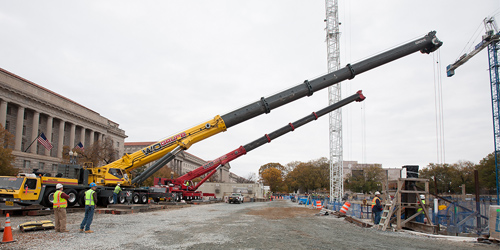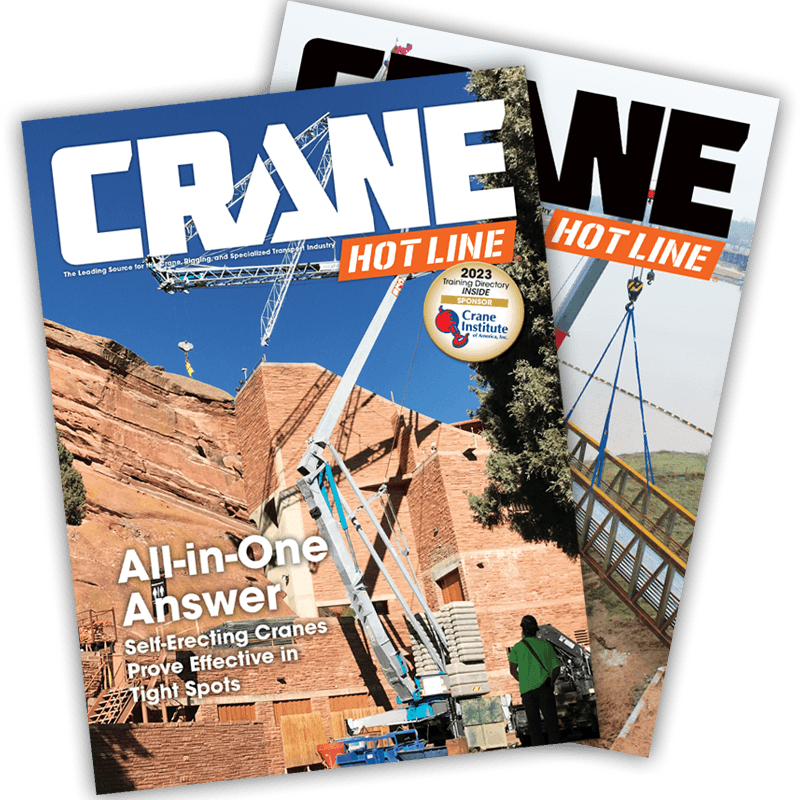Dual Grove GMK7550s Lift Historic Relics for Smithsonian Museum
 June 9, 2014 - The nation’s capital is home to the world’s largest museum and research complex – The Smithsonian Institution. Made up of nearly 20 museums and nine research centers, the organization houses some of the country’s most prized artifacts, including priceless works of art and dinosaur bones. It’s safe to say that any time the Smithsonian calls for something to be lifted, it requires the utmost in precision planning and flawless performance.
June 9, 2014 - The nation’s capital is home to the world’s largest museum and research complex – The Smithsonian Institution. Made up of nearly 20 museums and nine research centers, the organization houses some of the country’s most prized artifacts, including priceless works of art and dinosaur bones. It’s safe to say that any time the Smithsonian calls for something to be lifted, it requires the utmost in precision planning and flawless performance.
When W. O. Grubb, Chesterfield, Va., was recently asked to make a complex two-crane lift for the Smithsonian’s new National Museum of African American History and Culture, the company chose two Grove GMK7550s as the best tools for the job.
The lift took place on Constitution Ave., next to the National Mall and in view of the Washington Monument. During the lift, the two Grove cranes picked, swung, and positioned a nearly 50-ton railcar so large it had to be set in place before the museum was built around it.
After the road was closed, the two Grove cranes moved in to set the shrink-wrapped railway car into a 6o- ft. deep construction pit. The two cranes were on opposite ends of the 80-ft. railcar, which was rigged with two vertical straps and a 10-ft. spreader beam on each end. The straps were connected to lifting beams beneath the car to avoid damage from hooking to it directly.
The two cranes picked the railcar off the delivery trailer and coordinated their swinging to maneuver the railcar between them. The cranes' boom were then extended to reach the pit and the railcar was lowered into place.
The GMK7550 is Grove’s largest all-terrain crane. It can lift up to 550 tons and has a 197-ft. telescopic Megaform boom. The crane also features Megatrak suspension on a seven-axle carrier, a removable rear outrigger box, an Allison automatic transmission, and a Twin-Lock boom pinning system. Adding an 82- to 259-ft. luffing jib can provide up to 430 ft. of tip height.
Stephen Dieren, project manager for W. O. Grubb, said the project was unique and required an equally unique setup. “A key challenge of the project was getting the ground bearing pressures correct for the two Grove all-terrain cranes,” he said. “They were both set approximately 60 ft. from the construction pit to achieve the optimum pressures.”
In a second lift at the site, a single Grove GMK7550 picked and placed a 17.5-ton concrete guard tower and its corrugated steel roof, which had been used during the 1930s at Angola, the infamous Louisiana State Penitentiary.
“Months of planning and days of prep work were put in to execute this job,” Dieren said. “Everything went beautifully.


